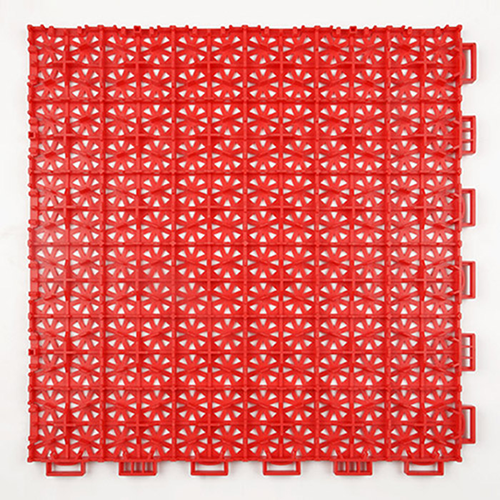Nov . 30, 2024 06:16 Back to list
Flooring Solutions for Commercial Properties and Their Impact on Aesthetics and Functionality
Flooring for Commercial Buildings Choosing the Right Type
When it comes to commercial buildings, selecting the appropriate flooring is a crucial aspect that can significantly impact both the aesthetics and functionality of the space. The right flooring not only enhances the appearance but also contributes to the safety, durability, and maintenance of the environment. Given the diverse nature of commercial spaces—be it offices, retail stores, restaurants, or industrial sites—understanding the various types of flooring available is essential for making an informed decision.
Types of Flooring for Commercial Use
1. Carpet Tiles and Broadloom Carpeting Carpeting is a popular choice for office environments due to its comfort and acoustic properties. Carpet tiles offer flexibility, allowing for easy replacement of damaged sections, while broadloom carpeting provides a seamless appearance. Both options can be customized in colors and textures to create a professional ambiance. However, it’s essential to select commercial-grade carpets that are durable and stain-resistant to withstand high foot traffic.
2. Vinyl Flooring Vinyl flooring has gained traction in commercial spaces, thanks to its durability and versatility. Available in sheets, tiles, or planks, vinyl flooring can mimic the appearance of natural materials like wood or stone without the associated maintenance costs. It's also resistant to moisture, making it suitable for areas prone to spills or humidity, such as restrooms and kitchens. With a wide range of designs and colors, vinyl can cater to various aesthetic preferences.
3. Laminate Flooring Laminate flooring is an economical and practical choice for commercial buildings, offering the look of hardwood without the high price tag. Use it in retail spaces, offices, or cafes to achieve a stylish appearance while benefiting from its scratch-resistant surface. However, it's crucial to choose a laminate featuring good water resistance, especially in areas where spills may occur frequently.
4. Hardwood Flooring Known for its timeless beauty, hardwood flooring can create a stunning first impression in commercial settings such as restaurants, upscale retail stores, and corporate offices. While it requires more maintenance than other flooring types, its durability makes it a worthy investment. Proper sealing and refinishing can extend its lifespan, ensuring that the flooring maintains its aesthetic appeal for years to come.
flooring for commercial buildings

5. Tile Flooring Ceramic or porcelain tiles are highly versatile options for commercial environments. Their durability and resistance to stains and spills make them ideal for high-traffic areas, including lobbies, restrooms, and kitchens. Available in various sizes, shapes, and finishes, tiles can create unique design patterns to enhance the visual interest of the space. Moreover, tiles are easy to clean and maintain, further adding to their appeal.
6. Concrete Flooring An increasingly popular choice in modern commercial architecture, polished concrete flooring is celebrated for its minimalistic aesthetic and durability. It requires minimal upkeep and can withstand heavy loads, making it ideal for industrial and retail environments. Additionally, concrete can be stained or coated to achieve different finishes and colors, offering design flexibility while being eco-friendly.
Important Considerations
When choosing flooring for a commercial building, several factors come into play
- Durability and Maintenance High foot traffic areas require flooring that can withstand wear and tear while being easy to maintain. - Safety Consider slip resistance, especially in areas where spills are likely to occur. Some materials allow for better traction and can prevent accidents. - Acoustics In office settings or restaurants, noise reduction is a significant consideration. Carpeting or acoustic underlays can help absorb sound. - Aesthetics The chosen flooring must align with the overall design and branding of the business, as it reflects the organization's image. - Budget Evaluating the overall cost, including installation and maintenance, is critical to ensure the flooring fits within the project’s budget without compromising quality.
Conclusion
In conclusion, selecting the right flooring for commercial buildings involves a careful evaluation of various materials and their suitability for the specific environment. Each type of flooring has its advantages and disadvantages, and the choice will ultimately depend on the specific needs of the business. By prioritizing durability, maintenance, safety, and aesthetic appeal, business owners can create functional and inviting spaces that enhance the overall experience for employees and customers alike.
-
Professional Tennis Court Lining Services Pickleball Court Marking Experts
NewsJun.24,2025
-
Pickleball Court for Sale - Premium Flooring Solutions for Sports Venues
NewsJun.10,2025
-
Maple Grove Outdoor Pickleball Courts - Premium Conversion & Durable Materials
NewsJun.10,2025
-
Best Pickleball Outdoor Courts Solutions Convert Tennis Courts, Outdoor Covered Courts, Maple Grove Options
NewsJun.10,2025
-
Convert Tennis Court to Pickleball Fast & Affordable
NewsJun.09,2025
-
Indoor Outdoor Pickleballs Durable & All-Weather for Any Court Play
NewsJun.09,2025

